Seaweed Growth And Cultivation Procedures
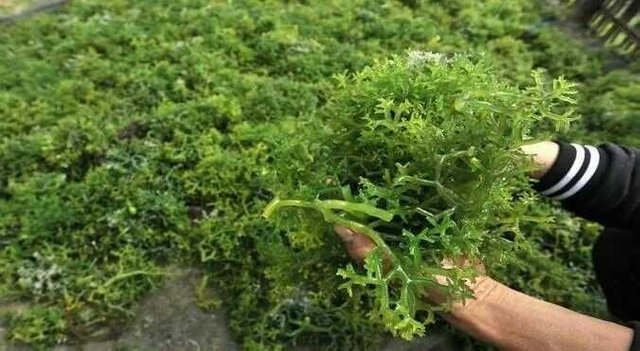
Seaweed which in the world of science known as Algae is very popular in the world of trading lately.
Seaweed was first recognized by the Chinese in about 2700 BC. At that time seaweed is widely used for vegetables and medicines. In 65 BC, the Romans used it as a cosmetic raw material. But with the development of time, knowledge of seaweed even growing. Spanish, French, and English make seaweed as raw material for making glass.
When is the use of seaweed in Indonesia unknown. Only when the Portuguese came to Indonesia around 1292, seaweed has been used as a vegetable. Just before the second world war, it was noted that Indonesia has exported seaweed to the United States, Denmark and France.
Currently seaweed in Indonesia is widely developed on the coast of Bali and Nusa Tenggara. Given the length of Indonesia's coastline (81,000 km), the seaweed cultivation opportunities are very promising. If you look at the world market demand to Indonesia which every year reaches an average of 21.8% of the world's needs, now the fulfillment to supply the demand is still very less, which is only about 13.1%. The low supply from Indonesia is due to poor cultivation and lack of information about the potential of seaweed to farmers.
Seaweed is widely used from red algae (Rhodophyceae) because it contains agar, keraginan, porpiran, furcelaran and pigment fikobilin (consisting of fikoeretrin and fikosianin) which is a food reserve containing many carbohydrates. But there are also utilizing the type of brown algae (Phaeophyceae). This brown algae contains many pigments of chlorophyll a and c, beta carotene, violasantin and fukosantin, pirenoid, and photosynthetic (filakoid) sheets. In addition, brown algae also contains food reserves such as laminarin, cellulose, and algin. In addition to these materials, red and brown algae contain lots of jodium.
Benefits
- Agar - agar
People are generally familiar with agar - agar in the form of flour commonly used for pudding making. But people do not know exactly what the order is. The agar is a sulfanic acid which is an ester of galacto linear and is obtained by extracting the Agarophytae type algae. This agar is soluble in hot water and does not dissolve in cold water.
Nowadays, the growing use of agar, once used only for food, has now been used in textile, cosmetics, and others. Its main functions are as a feedstock, and the manufacturer of emulsions, thickening agents, fillers, and gel-making materials. In industry, agar is widely used in the food industry such as for baking, soup, sauce, ice cream, jelly, candy, sherbet, cheese, pudding, jam, beer, wine, coffee, and chocolate. In the pharmaceutical industry is useful as a laxative or laxative, capsule wrapping, and mixture of dental samples. In the textile industry can be used to protect silk sheen. In the cosmetics industry, agar is useful in the manufacture of ointments, creams, lotions, lipsticks, and soaps. In addition there are many other benefits of agar - agar, such as for the manufacture of film plates, toothpaste, shoe polish, paper, and canning of fish and meat.
- Concern
Keraginan is a polysaccharide compound composed of D-galactose and L-galactose 3,6 anhydrogalactose units connected by 1 to 4 glycosilic bonds. The cash feature of the puzzle is that each galactosane unit binds a sulfate group, the sulfate amount is about 35.1%.
The usefulness of the dough is almost the same as agar, among others, as a regulator of balance, thickener, gelling, and emulsifier. Keraginan is widely used in the food industry for baking, bread, makroni, jam, jelly, fruit juice, beer, ice cream and gel coating meat products. In the pharmaceutical industry is widely used for toothpaste and medicines. It can also be utilized in the textile, cosmetic and paint industries
- Algin (Alginate)
Algin is obtained from seaweed species of brown algae. This algin is a polymer of uronic acid arranged in the form of long linear chains. Algin form in the market is often found in the form of sodium, potassium or ammonium alginate water-soluble.
The use of algin in the industry is as a thickener, balance regulator, emulsifier, and oil-resistant thin film formers. Algin in the industry is widely used in the food industry for making tan ice cream, sherbet, iced milk, bread, cakes, candy, butter, sauce, canning meat, jam, syrup, and pudding. In the pharmaceutical industry is widely used for tablets, ointments, capsules, plasters, and filters. Manufacture of cosmetics for cream, lotion, shampoo, hair dye ,. And in other industries such as textiles, paper, photography, insecticides, pesticides, and wood preservatives.
Function of TON in Seaweed Ecology
Seaweed was first found to live naturally rather than cultivation. They are scattered in the water according to the environment they need. Seaweed requires a place to stick to support his life. In nature this sticking place can be dead corals, mollusk shells, and can also be sand and mud.
In addition, seaweed is in need of sunlight to hold the process of photosynthesis. The amount of sunlight is strongly influenced by the brightness of sea water. In order for the needs of sunlight is available in optimal amounts it must be regulated depth in cultivating it. Ideal depth is located 30 - 50 cm from the surface of the water.
The process of seaweed photosynthesis is not only influenced by the sun alone, but also requires nutrients in a sufficient number of both macro and micro. Nutrient elements are mostly obtained from the water environment is absorbed directly by all parts of the plant. To supply these nutrients is usually done fertilization during cultivation. To help provide nutrients in the optimal amount and so quickly absorbed by this seaweed, it must be provided in the ready-to-use (ionic) nutrients. Nutrient element is mostly contained in TON (Organic Farms Archipelago).
TON (Tambak Organik Nusantara), contains all the ingredients needed in the growth of seaweed. Both provide complete micro-nutrients, as well as providing macro elements. In addition TON will also improve the quality of seaweed, because it will reduce the level of heavy metal pollution that will also be absorbed by seaweed. If this heavy metal is not binding, it will be absorbed in the process of nutrient absorption of seaweed, so it is very dangerous for consumers. In the presence of TON, this heavy metal will be bound in the form of compounds and will settle or difficult to be absorbed by the absorption process.
Seaweed growth is also influenced by the amount of dissolved oxygen (DO), salinity (salt content) and temperature. Oxygen content in addition influenced by the movement of water is also influenced by the availability of nutrients. So TON is also very important to support the availability of oxygen in the waters. The ideal temperature for seaweed growth is around 200 - 280 C
With the availability of nutrients in optimal amounts and balanced environmental conditions due to the influence of TON, the quality and quantity of the ingredients contained by seaweed will also increase.
In addition, the use of TON for seaweed cultivation will also help bind to harmful compounds and elements in the water. These compounds and elements if adsorbed in the seaweed metabolism system, will interfere with seaweed growth and will also degrade the quality of the results. In addition, if this seaweed will be used for food, it will be very dangerous for those who eat it. The content of active carbon compounds from TON will greatly help to reduce these harmful compounds and elements.
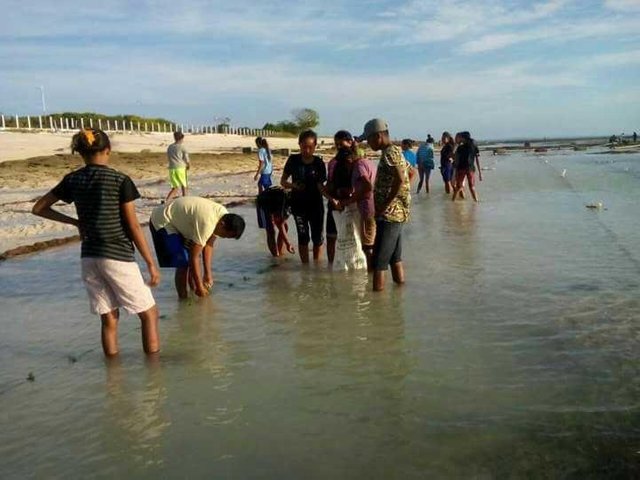
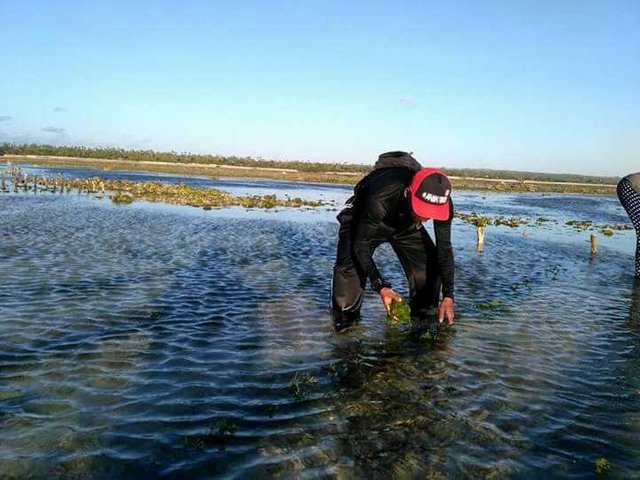
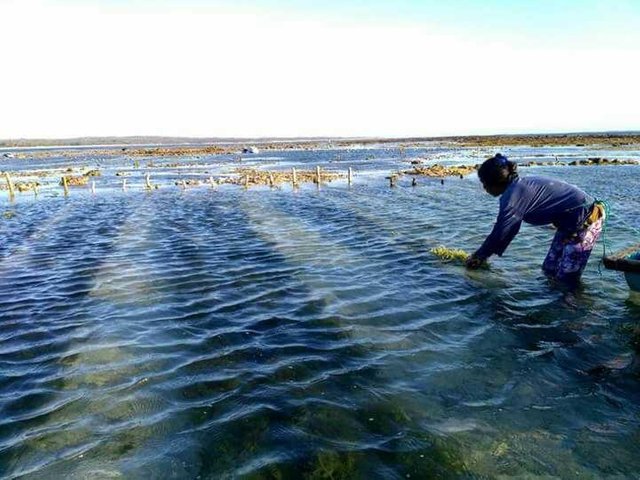
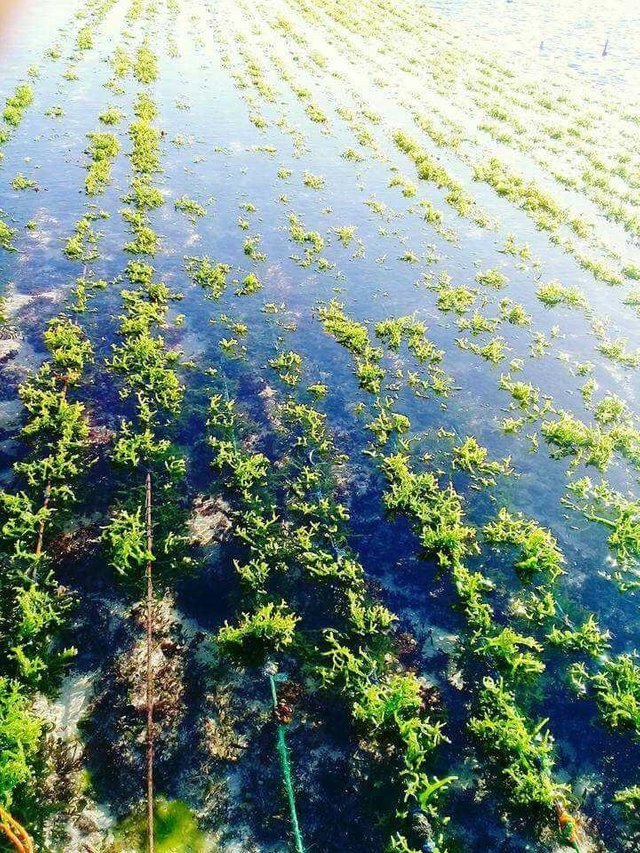
Seaweed Cultivation and How to Use TON (Tambak Organik Nusantara)
In running seaweed cultivation, the first thing to note is the selection of cultivation location. Preferably the location of cultivation is cultivated in waters that do not experience large salinity fluctuations (salinity) and free from industrial pollution and household. In addition, site selection should also consider the economic and labor aspects.
Seaweed cultivation can be done in the coastal areas off or in the pond. In the current discussion we will emphasize the cultivation in the pond. This is due to the ineffective role of TON when it is released (beach). For the cultivation of loose waters are distinguished in several methods, namely:
- Basic Loose Method
Where this way is done by tying the seaweed seeds on the ropes - ropes are pegged in a row - jajar in marine waters with a depth between 30-60 cm. Seaweed is planted in the bottom of the water.
- Raft Method
This method is done in waters with a depth of more than 60 cm. It is done by tying the grass seeds on the ropes tied in the stakes in a position like floating in the middle of the depth of the waters.
- Hanging Rope Method
If the two methods above the position of seaweed seeds in a horizontal position (horizontal), then this hanging method is done by tying the seeds of seaweed in a vertical position (perpendicular) on the ropes arranged in a row.
Use of TON with 3 way fig above can only be done with seed immersion system. Because if the TON is applied in the waters will be ineffective and will be much lost by the ocean currents. Method of immersion seeds done by:
Dissolve TON in seawater placed in container.
For 1 liter of sea water is given a quarter tablespoon (5 - 10 grams) TON and add 1 - 2 cc HORMONIK.
Soak for 4 - 5 hours, and the seeds are ready to be planted.
Use of TON will be very effective if applied in the cultivation of seaweed in the pond. How to cultivation in this pond can be done by stocking method. The trick is as follows:
The pond must be equipped with an entry and discharge channel.
The pond is dried first.
Sprinkle lime for a neutral pH (0.5 to 2 tons per hectare depending on the acidity of the soil).
Let stand for 1 week.
Apply TON, with doses of 1 - 5 bottles per hectare (for areas with high contamination, elevated dosage), dissolved with water first, then spread evenly at the bottom of the pond.
Let stand 1 day
Enter the water to a height of 70 cm.
Spread seaweed seeds that have been soaked with TON and HORMONIK as the way of soaking above. With a density of 80-100 grams / m2.
When pond bottom is hard enough, seedlings can be planted like rice planting.
No need to add macro fertilizer.
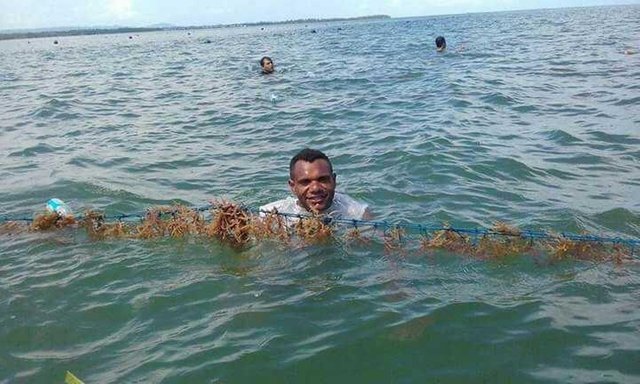
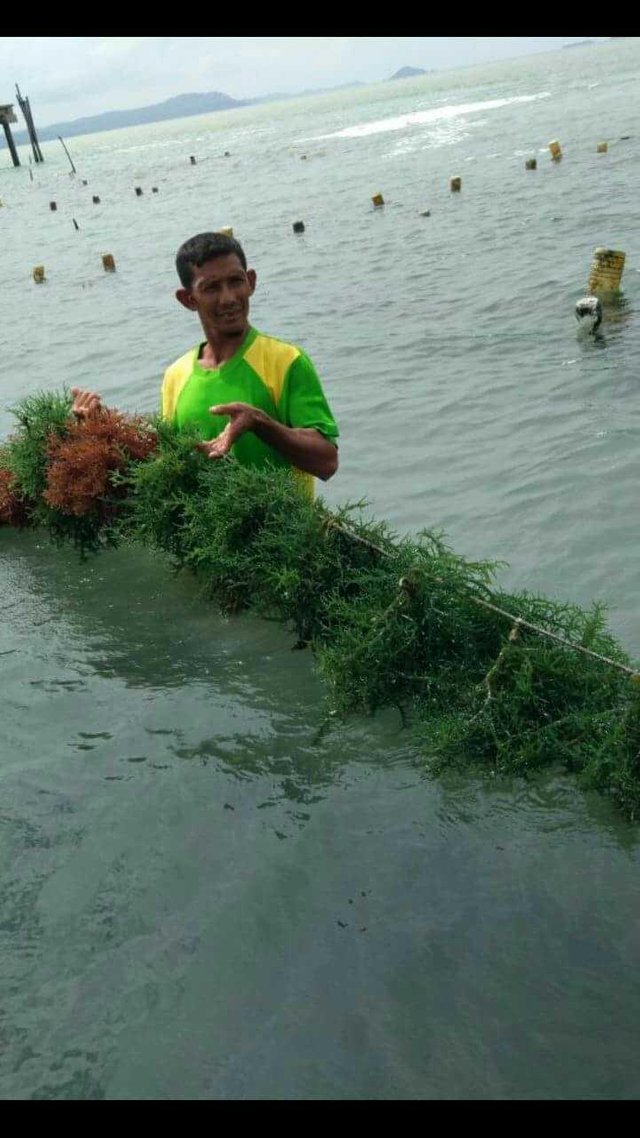
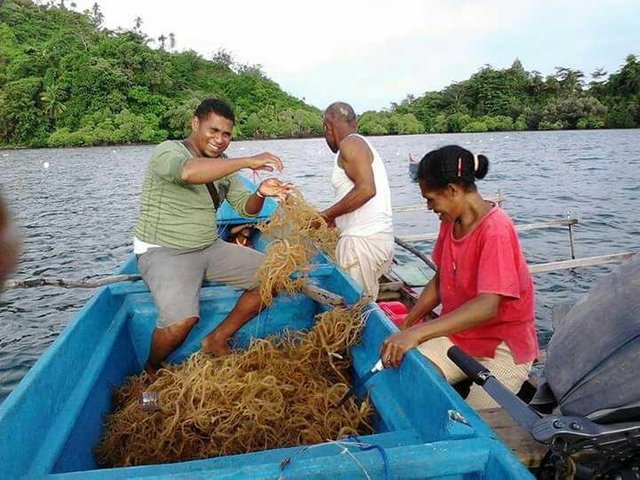
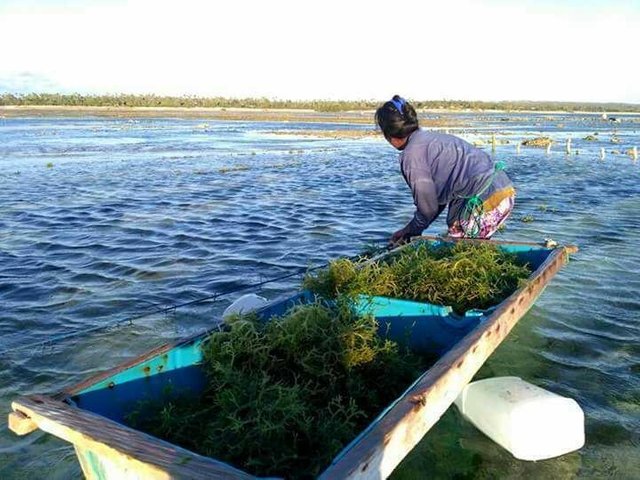
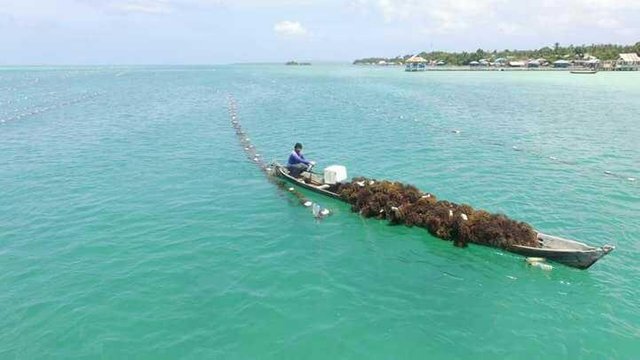
Maintenance and application of TON (Tambak Organik Nusantara) following.
During cultivation, continuous supervision should be undertaken. Especially for the cultivation in the pond must dilakukaan at least 1-2 weeks after seed stocking, this is to control the position of seaweed stocked. Usually because of the influence of wind, the seeds will collect in certain areas, if so must be separated and spread evenly again in the area of ponds.
Dirt in the form of water dust (suspended solid) is often attached to plants, especially in calm waters such as ponds. At that time, the plants should be rocked in the water to keep the plants clean from the dirt. This dirt will disrupt the metabolism of seaweed. Some marine plants such as Ulva, Hypea, Chaetomorpha, and Enteromorpha often twist plants. These plants should be removed and separated from seaweed in order not to degrade yield quality. How to collect them on land. Sea urchins, fish and turtles are herbivorous animals that must be prevented from preying on seaweed. To avoid it is usually installed nets around the cultivation area. For cultivation in ponds is done by installing a net in the channel of income and expenditure.
Harvesting
At this stage of harvesting must be considered the right way and time to obtain results in accordance with market demand in quality and quantity.
Plants can be harvested after the age of 6 - 8 weeks after planting. How to harvest is to lift the whole plant of seaweed to land. Seaweed cultivated in the pond is harvested by means of grown crops removed and left little to be bred further. Or it could be done by picking the branches from the parent plant, but this way will result in the acquisition of a little bit of cigarette and the growth of the parent plant for subsequent cultivation will decrease.
If the seaweed is harvested at about one month, it will usually be obtained a ratio of wet weight and dry weight of 8: 1, and if harvested at the age of two months will usually be obtained a ratio of 6: 1. For the type of gracilaria usually obtained yields around 1500 - 2000 kg dried seaweed per hectare. It is expected that with the use of TON (Organic Farms Archipelago) will increase around 30 - 100%.
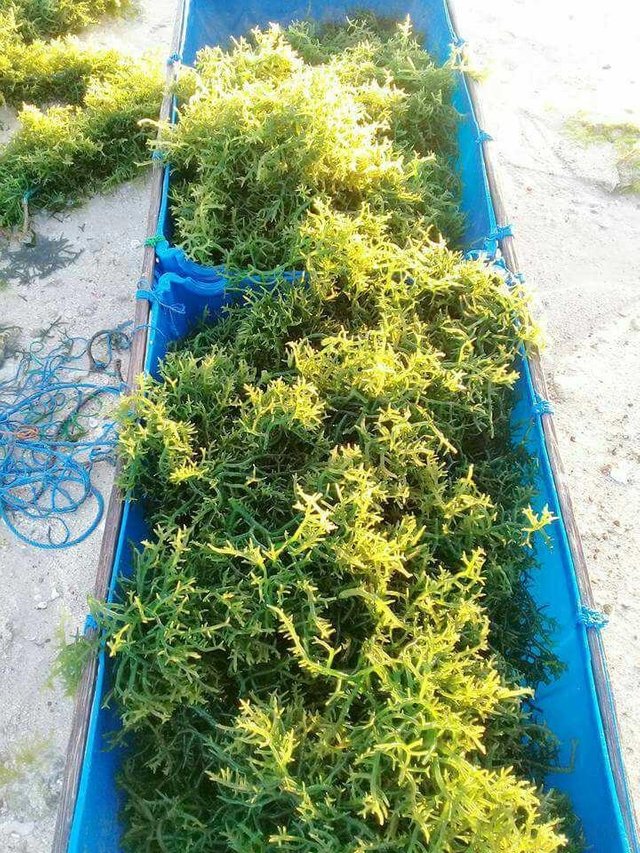
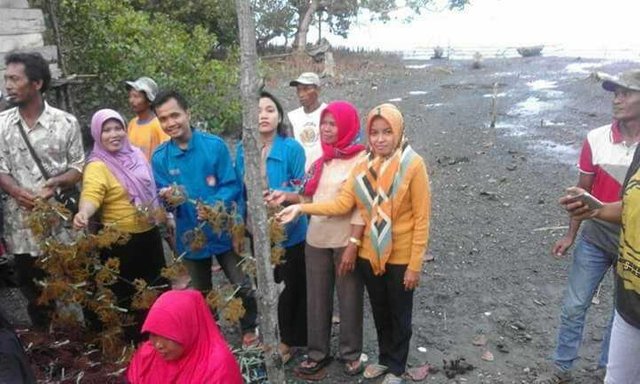
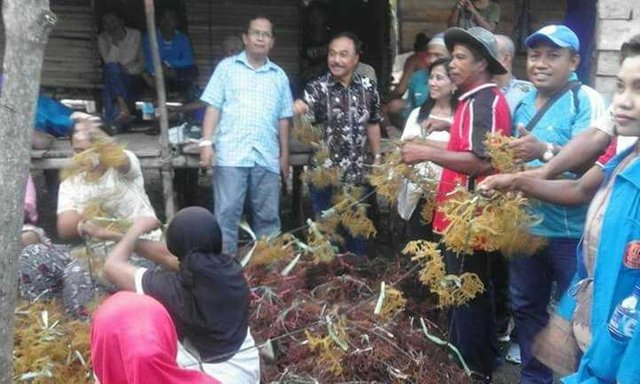
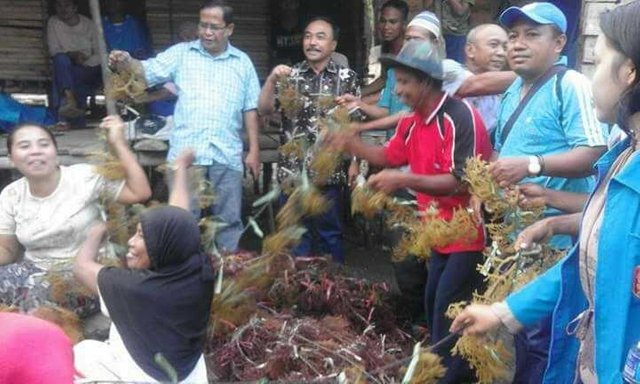
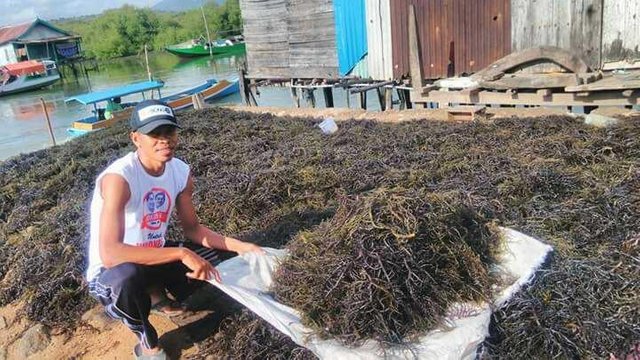
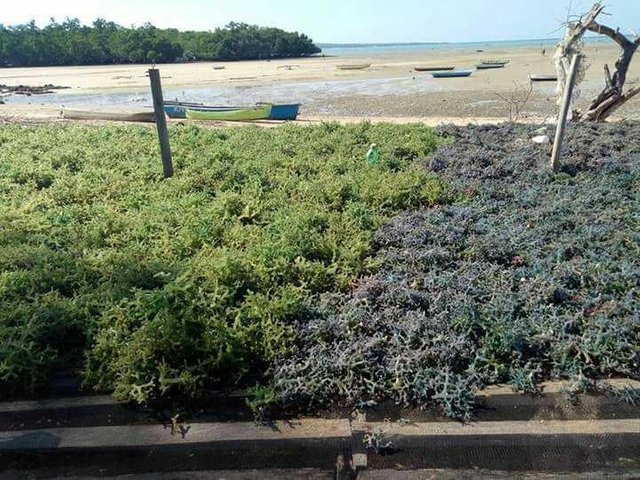
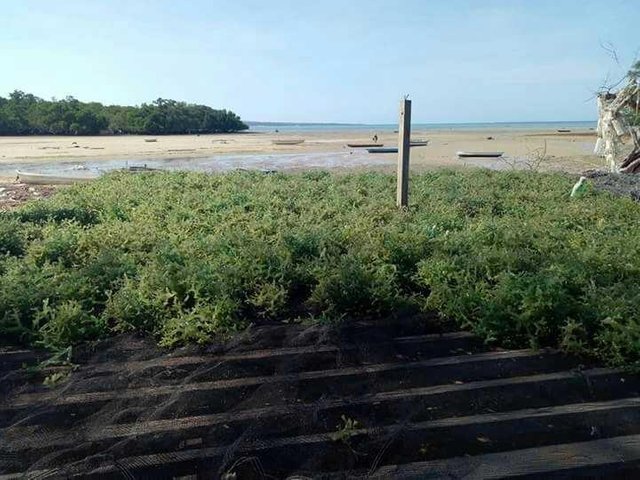
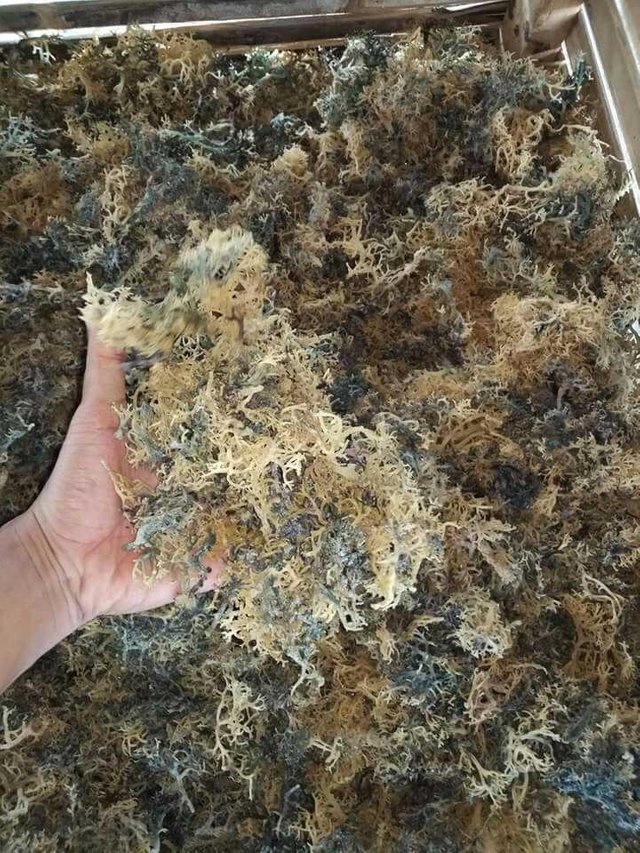
That's the discussion about seaweed cultivation, hope you guys like it and hopefully useful.
Please share this post if you think this post can be useful, thanks.
Powerful seaweed so many uses
yes you are right, do you like the consumption of seaweed? @pagoda
Congratulations! Your post has been selected as a daily Steemit truffle! It is listed on rank 10 of all contributions awarded today. You can find the TOP DAILY TRUFFLE PICKS HERE.
I upvoted your contribution because to my mind your post is at least 14 SBD worth and should receive 38 votes. It's now up to the lovely Steemit community to make this come true.
I am
TrufflePig, an Artificial Intelligence Bot that helps minnows and content curators using Machine Learning. If you are curious how I select content, you can find an explanation here!Have a nice day and sincerely yours,

TrufflePigthanks for this info..
I never knew so much about seaweed!
Thanks to @josephsavage, this post was resteemed and highlighted in today's edition of The Daily Sneak.
Thank you for your efforts to create quality content!
you can know from this post article, maybe this post can help you know about seaweed @sneakyninja